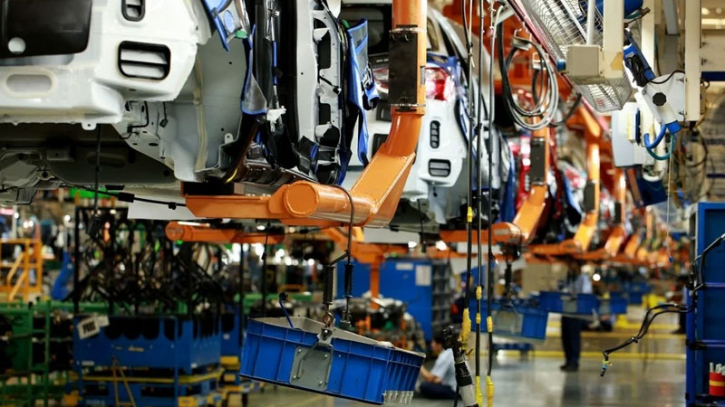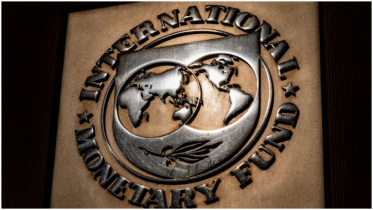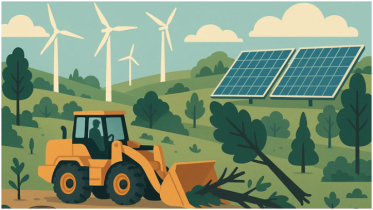How the EV transition is reshaping the global auto industry?

The biggest transformation of the auto industry in a century is underway, as governments offer massive subsidies to speed up the shift to electric vehicles.
In the past year, several surprises have emerged.
One is the size of the lead Chinese automakers have opened, and just how difficult it will be for the rest of the field to compete with the lower cost and advanced technology of made-in-China cars.
Another is the extent of the country's dominance of the EV supply chain.
And just as automakers have begun scrambling to catch up, the growth in demand for EVs has slowed globally.
This combination could mean big losses for Western automakers and endanger ambitious goals for reducing the greenhouse gas emissions that come from road transportation.
1. How big is China's EV industry?
Chinese brands account for about half of all EVs sold globally.
Chinese companies have succeeded in taking domestic market share from former leaders such as Volkswagen AG, while home-grown champion BYD Co., the top brand within China, overtook Tesla Inc. as the world's largest EV maker in the fourth quarter of 2023.
China's consumers are going electric in large numbers: fully-electric vehicles (that is, not hybrids or plug-in hybrids) accounted for a quarter of all new passenger car sales there in 2023, compared with 15.7% of sales in Europe.
UBS analysts predicted that China's global market share will almost double to 33% while traditional Western carmakers will see their share fall to 58% from 81% by 2030; they also estimated that in 2023 BYD had a 25% cost advantage over North American and European brands.
2. What's China's advantage?
China's predominance is most pronounced in batteries, the most expensive part of an EV.
More than 80% of EV battery cells are supplied by Chinese producers, backed by a supply chain that is increasingly putting the mining and processing of component minerals such as lithium, cobalt, manganese and rare earth metals in the country's hands.
The cost of batteries in China has dropped to $126 per kilowatt hour on a volume-weighted average basis, while packs are priced 11% higher in the US and 20% higher in Europe, according to BloombergNEF.
In the meantime, Chinese manufacturers are already unveiling a new generation of batteries that rely on sodium, which is more abundant than the lithium now used in EV batteries, and less prone to catch fire.
3. What has this meant to other automakers?
In 2023, tough competition in China's domestic auto market and the slowdown of its economy led to pressure to sell elsewhere, and the country exported 1.55 million EVs in 2023, a 64% jump over the prior year.
Chinese exports have gone mostly to the rest of Asia and to Europe, where subsidies to consumers are available on imported as well as domestically made cars.
Chinese brands, led by BYD and Nio Inc., saw their European market share jump to 5.6% in the first half of 2023 from 1.1% in 2020.
In September, the European Union opened a probe into China's state subsidies of EV makers.
The US has also offered subsidies, but the expanded tax credits in President Joe Biden's Inflation Reduction Act (IRA) are limited to cars built in North America with components mainly made domestically.
The US also places tariffs of 25% on Chinese car imports, compared with 10% in Europe.
4. What's happened to EV demand?
Global sales of EVs are still rising, but growth is slowing.
According to BloombergNEF, sales of all-electric vehicles plus plug-in hybrids that can also be powered by gasoline or diesel more than doubled in 2021 and grew 62% in 2022.
But the figure was 31% last year. BNEF forecasts that the annual increase will slow again to 21% this year.
5. Why is EV sales growth slowing?
China's economy continues to struggle, meaning it is no longer the reliable source of growth that it was in years past.
Most Chinese manufacturers missed their 2023 sales goals, and sales are expected to slow for a second year in 2024.
But the bigger issue is demand in Europe and the US. For the first wave of EVs, carmakers were able to rely on tech enthusiasts and government subsidies for company-car purchases to boost volumes.
But for the next phase, they face more cost-conscious drivers, many of whom are sceptical of the technology and baulk at buying vehicles that on average are 30% and 27% pricier than fuel-burning equivalents in Europe and the US respectively.
The subsidies and tax breaks that helped drive sales are drying up in Europe, and the current incentives in the US are contingent on a local-production threshold, limiting buyers' choices.
On top of sticker shock, consumers have been put off by an increase in borrowing costs as central banks have moved to rein in inflation.
Some consumers are still anxious about charging infrastructure and battery range.
6. How are carmakers reacting?
Several carmakers, led by Tesla, have cut prices repeatedly over the past year to win customers.
Many have also reduced output and staffing to maintain profits.
Manufacturers are racing to introduce several cheaper models. European versions include Stellantis' e-C3, the Renault 5 and the Volvo EX30.
Carmakers are also investing heavily in battery technology to win over wary potential buyers.
BYD and Tesla have led the pack in embracing lithium-iron-phosphate batteries, which have a lower energy density but cost less, boast a longer life and are perceived as safer than the main alternative — nickel-cobalt-manganese batteries.
Volkswagen, Toyota, BYD, and Chinese battery company Contemporary Amperex Technology are all working on developing solid-state batteries, a potential breakthrough technology that could make EVs more efficient and less expensive.
7. What are other countries doing in response to Chinese exports?
In the US, in the year after the passage of the IRA, investments totaling $55.1 billion for US battery manufacturing were announced along with $16.1 billion for EV factories.
While that eventually will produce a wave of capacity, the immediate effect was limited, in part because so many carmakers rushing to ramp up production have had to rely on Chinese technology.
In 2023, only 14 models in production were eligible for IRA purchase subsidies.
The requirements for how much of the value of battery components and where raw materials for batteries can come from are due to rise in 2024 and through 2030.
That's posing big problems for carmakers like GM and Ford Motor Co., which are losing billions of dollars on their EV line ups and face a consumer backlash against high vehicle prices.
The pinch is especially acute because of their current reliance on Chinese technology, raw materials and components as they struggle to build their own supply chains and hold costs down.
Source: Bloomberg
.png)




